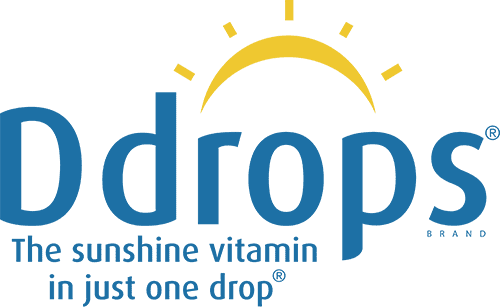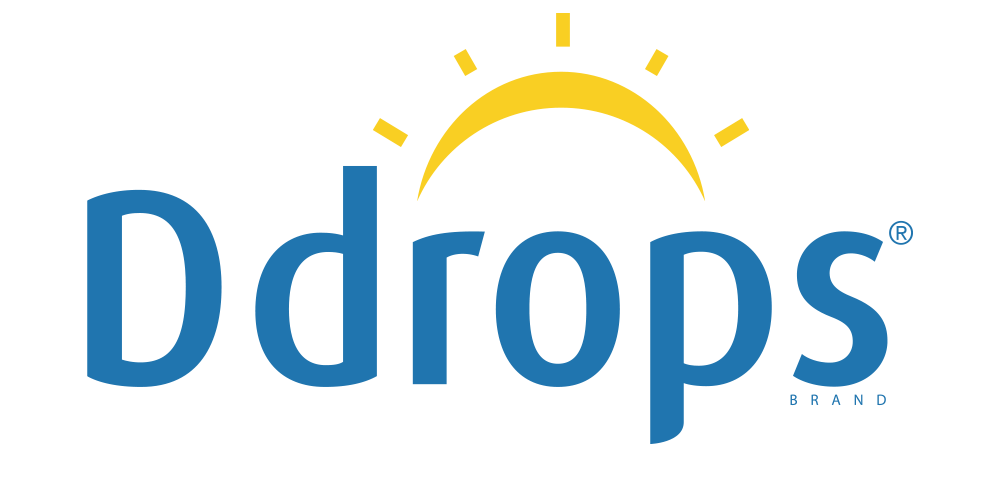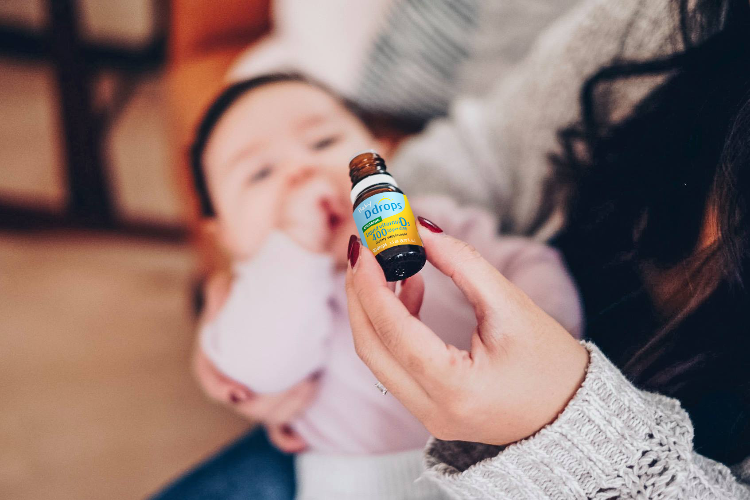12 Mei 2016
Sejak seorang ibu mengetahui bahawa dia hamil, dia melakukan yang terbaik untuk mengambil makanan yang sihat untuk memastikan dia memberi bayinya nutrisi yang baik. Selepas bayi dilahirkan, ibu-ibu digalakkan untuk menyusukan bayi kerana ia dianggap sebagai nutrisi terbaik yang boleh ditawarkan kepada anaknya. Walau bagaimanapun, susu ibu cenderung kekurangan vitamin utama yang penting untuk tubuh bayi yang sedang membesar – vitamin D. Beberapa kajian telah mengukur jumlah vitamin D dalam susu ibu dan kesemuanya menunjukkan tahap vitamin D yang rendah secara konsisten, walaupun ketika ibu sedang mengambil suplemen yang memenuhi dos harian yang disyorkan. Tanpa vitamin D yang mencukupi bayi terdedah kepada penyakit riket, yang menyebabkan kelemahan dan kelembutan tulang mereka. Ini boleh menyebabkan kelewatan dalam pertumbuhan bayi dan kecacatan tulang mereka, seperti kaki tunduk dan pergelangan tangan atau buku lali yang menebal. Memandangkan bayi membesar dengan begitu banyak pada tahun pertama kehidupan mereka, adalah amat penting untuk mereka mendapat vitamin D yang mencukupi semasa masa kritikal ini.
Jadi bagaimana kita menyelesaikan masalah ini? Adakah mungkin untuk ibu meningkatkan tahap vitamin D mereka sendiri supaya mereka boleh menyampaikan jumlah yang mencukupi kepada bayi yang menyusu mereka? Adakah lebih berkesan memberi vitamin D terus kepada bayi? Terdapat dua pemikiran mengenai isu ini. Yang pertama ialah bayi hanya perlu menerima susu ibu mereka dan terpulang kepada ibu untuk meningkatkan tahap vitamin D sendiri supaya bayinya mendapat cukup. Yang kedua ialah sama ada terlalu sukar atau tidak mungkin bagi seorang ibu untuk meningkatkan tahap vitamin D sendiri dengan secukupnya dan bayi mempunyai peluang yang lebih baik untuk mendapat tahap vitamin D yang optimum jika mereka menerima vitamin D secara langsung. Siapa yang betul? Kedua-duanya adalah.
Adakah mungkin bagi ibu yang menyusu untuk meningkatkan tahap vitamin D sendiri supaya dia boleh menyampaikan vitamin D yang mencukupi kepada bayinya? Sudah tentu! Tetapi untuk melakukan ini, ibu perlu mengambil 4,000 hingga 6,400 IU vitamin D setiap hari setiap hari.[1] Untuk meletakkan ini dalam perspektif, vitamin pranatal biasanya mengandungi hanya 400 IU, yang jauh lebih rendah daripada jumlah ini.[2] Wanita boleh mendapat beberapa vitamin D daripada makanan seperti susu diperkaya, ikan berlemak, minyak hati ikan, dan kuning telur tetapi makanan ini cenderung untuk dimakan dalam jumlah yang kecil. Matahari juga merupakan sumber vitamin D tetapi banyak faktor akan mempengaruhi jumlah vitamin D yang boleh diserap. Faktor-faktor ini dipengaruhi oleh perkara-perkara seperti sejauh mana anda tinggal di utara, masa dalam setahun, berapa banyak masa yang anda habiskan di luar tanpa pelindung matahari, dan kegelapan kulit anda.[3] Akhirnya, cara yang paling boleh dipercayai untuk meningkatkan tahap vitamin D ialah dengan mengambil suplemen menggunakan produk vitamin D yang berdiri sendiri.
Cadangan vitamin D untuk orang dewasa adalah berkisar. Kebanyakan pakar bersetuju bahawa vitamin D tambahan selamat dalam jumlah sehingga 4,000 unit antarabangsa setiap hari semasa mengandung atau menyusu.[4] Pada masa ini tidak terdapat maklumat keselamatan yang mencukupi untuk mengesyorkan pengambilan dos yang lebih tinggi daripada 4,000 IU sehari. Walaupun jarang berlaku, terdapat risiko tertentu yang boleh berlaku apabila mengambil dos vitamin yang terlalu besar.[5] Oleh itu, mana-mana wanita menyusu atau hamil yang berfikir untuk mengambil lebih daripada 4,000 IU vitamin D setiap hari harus berbincang dengan pembekal penjagaan kesihatan mereka. pertama.
Jadi apakah yang perlu dilakukan oleh seorang ibu apabila dia tidak boleh atau tidak mahu mengambil sejumlah besar suplemen vitamin D? Pilihan terbaik dan paling selamat ialah memberi bayi suplemen harian vitamin D. American Academy of Pediatrics, Health Canada, dan Canadian Pediatric Society semuanya mengesyorkan bahawa bayi yang menyusu secara eksklusif, sihat, cukup bulan perlu menerima 400 IU vitamin D setiap hari .[6][7][8] Persatuan Pediatrik Kanada mengesyorkan bahawa bayi yang tinggal di komuniti Asli utara perlu mendapat 800 IU vitamin D setiap hari semasa musim sejuk.
Kemas kini dan suntingan oleh Carrie Noriega, MD, FACOG.
[1] Adekunle Dawodu dan Reginald C. Tsang. Status Vitamin D Ibu: Kesan ke atas Kandungan Vitamin D Susu dan Status Vitamin D bagi Bayi Menyusu. 2012 Persatuan Pemakanan Amerika. Adv. Nutr. 3: 353–361, 2012; doi:10.3945/an.111.000950[2] Vitamin D: Pemeriksaan dan Suplemen Semasa Kehamilan. Kolej Obstetrik dan Ginekologi Amerika. Pendapat Jawatankuasa Nombor 495, Julai 2011 mengesahkan semula 2015. https://www.acog.org/Resources-And-Publications/Committee-Opinions/Committee-on-Obstetric-Practice/Vitamin-D-Screening-and-Supplementation-During- Kehamilan
[3] Institut Perubatan Akademi Kebangsaan (AS). Pengambilan rujukan diet untuk kalsium dan vitamin D. Washington, DC: National Academy Press; 2010.
[4] Vitamin D: Pemeriksaan dan Suplemen Semasa Kehamilan. Kolej Obstetrik dan Ginekologi Amerika. Pendapat Jawatankuasa Nombor 495, Julai 2011 disahkan semula 2015. https://www.acog.org/Resources-And-Publications/Committee-Opinions/Committee-on-Obstetric-Practice/Vitamin-D-Screening-and-Supplementation-During- Kehamilan
[5] Adekunle Dawodu dan Reginald C. Tsang. Status Vitamin D Ibu: Kesan ke atas Kandungan Vitamin D Susu dan Status Vitamin D bagi Bayi Menyusu. 2012 Persatuan Pemakanan Amerika. Adv. Nutr. 3: 353–361, 2012; doi:10.3945/an.111.000950.
[6] American Academy of Pediatrics, Suplemen Vitamin D untuk Bayi, 3/22/2010, https://www.aap.org/en-us/about-the-aap/aap-press-room/pages/Vitamin-D- Supplementation-for-Infants.aspx




ทิ้งข้อความไว้
เว็บไซต์นี้ได้รับการคุ้มครองโดย hCaptcha และมีการนำนโยบายความเป็นส่วนตัวของ hCaptcha และข้อกำหนดในการใช้บริการมาใช้